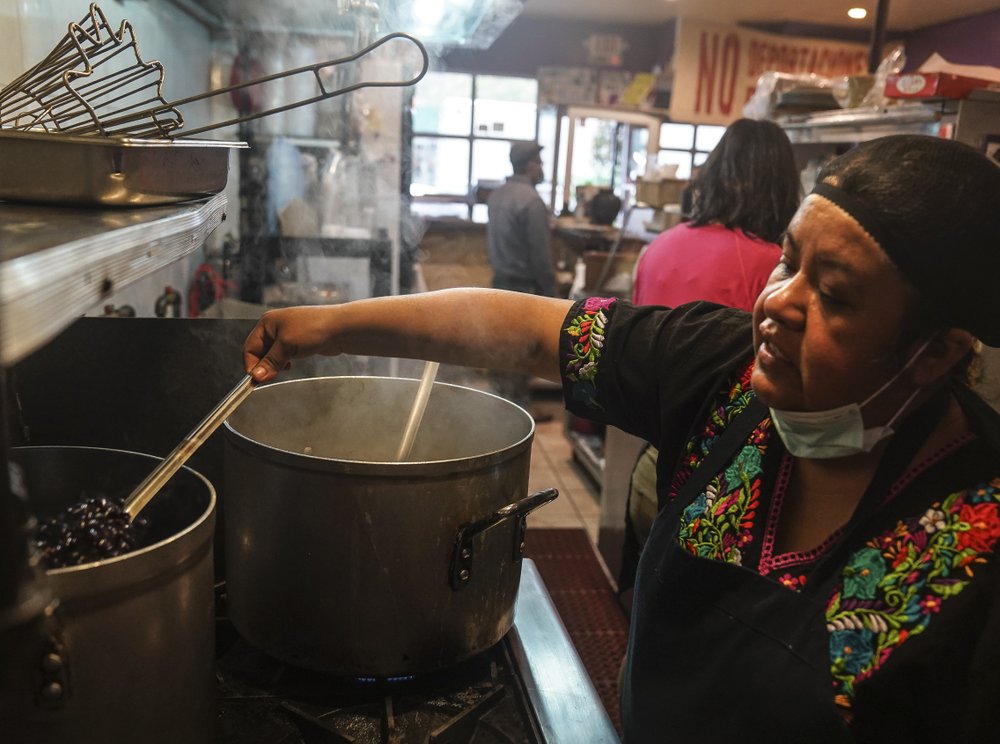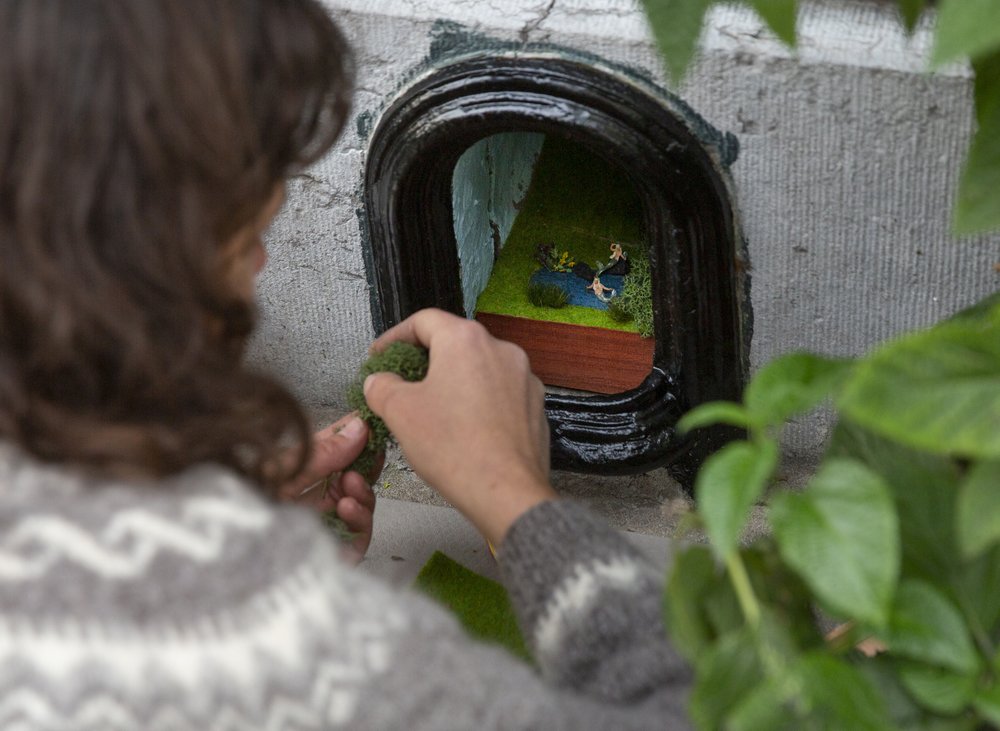Bronx restaurant becomes soup kitchen

La Morada, a small Mexican restaurant in the Bronx, serves more than their acclaimed Oaxacan food. They also function as a soup kitchen for those who need food during the pandemic. As a family business owned by immigrants, Yajaira Saavedra and her parents own the restaurant and employ immigrants looking for work. When the pandemic began, there was no question that they would turn their restaurant into a soup kitchen.
“We always say that activism is our secret spice, so I feel like it was just very natural for us to serve the community with what we have,” Saavedra told The Associated Press. “It also goes back to our Indigenous roots when we all pitched in, gathered small ingredients and made a big pot as a meal.”
Each day 650 meals are served for unemployed New Yorkers unable to cook for themselves. The restaurant opened their soup kitchen in April and within two hours on their first day they handed out 200 meals to people lined up on the street. When the family had COVID symptoms early on in the pandemic, they had to close for a month and were funded by donations to keep the business and soup kitchen running. Local volunteers, service organizations, churches and businesses all pitch in to pay for food and fund their efforts. The soup kitchen is open Tuesday through Friday, with Mondays being preparatory days.
Game winning layup funds hurricane reconstruction

It was overtime in a game between basketball powerhouse Duke and Stephen F. Austin, a small school from Texas. In the last seconds of the game Nathan Bain drove the ball to the basket and shot a layup, securing the small team’s win and Duke’s first non-conference loss in nearly 20 years. That layup would later sponsor hundreds of thousands of dollars of relief efforts towards the Bahamas, his home country, after a devastating hurricane. Hurricane Dorian hit the islands in September 2019, with winds up to 185 mph destroying homes and buildings, one of them being Bain’s family home.
The school set up a donation effort before the game, raising $2,500. But after his game-winning layup, Bain received $151,740 from about 4,000 donors. This money funded the rebuilding of Bain’s home and their church. The house has been habitable since July and the church has been available since April. The church now deliveries of groceries, care packages, health supplies and more to those in need during the pandemic.
“You’re going to hinder your faith when you ask questions you know you don’t have an answer to because you’re just going to keep on asking, ‘Why, why, why?’” Bain told The Associated Press. “There’s a process for things. Sometimes, you just have to understand there’s a bigger plan.”
Artists makes figurine scenes in boot scrapers

Elke Lemmens uses small sculptures to tell big stories. In her town of Antwerp, Belgium, Lemmens is using old boot scrapers outside homes to create new worlds. The art is part of a project funded by a community building grant from the city in order to share the stories of those stuck inside. With new restrictions in the city as COVID cases surge, Lemmens asks for stories of those who live in the houses with boot scrapers in order to create her scenes. Boot scrapers were popular when there were no sidewalks and people frequently tracked dirt into homes, but welcome mats and newer infrastructure made them obsolete. Lemmen’s project brings life back into them.
Through her project Lemmen was able to collect stories from all over the town and tell stories of Belgium history. The scenes include Belgian writer Roger van de Velde trapped in the prison he was held in, a family who likes to travel resting on a globe, mermaids basking in a pool, and even more personal stories. One in particular features a nine year-old girl who died in 2015 living out her dream of riding a horse on the beach. Though finding figurines that fit the scenes is difficult and sometimes requires Lemmens to paint them herself, she is glad her work sparks joy when COVID restrictions keep people in their neighborhoods.
Alaskan Tlingit elder honored through virtual funeral

In native Alaskian tradition, after a Tlingit elder dies the Raven and Eagle clans come together to honor their life. But when Tlingit elder and college professor David Katzeek died last month, the tribe did not know how to follow their traditions. So they used Zoom and YouTube to honor Katzeek’s life.
“We know that many of our people are grieving over this great loss, but we also recognize that we need to protect each other and make sure we stay healthy. We also wanted to honor Kingeisti in our traditional way,” Sealaska Heritage Institute president Rosita Worl said, using Katzeek’s Tlingit name.
Katzeek was the first president of the Institute, revitalizing Native Alaskan culture and the Tlingit language through oral history. Traditionally people wear native clothing and articles and call upon ancestral spirits to honor the dead and help those grieving. Though some things had to be adjusted because of the pandemic, tribe members were able to perform many of the traditions to honor Katzeek. And though this service was cut short to four hours, as many services can be upwards of 10 hours long, thousands were able to participate in the ceremony because of its online presence.




